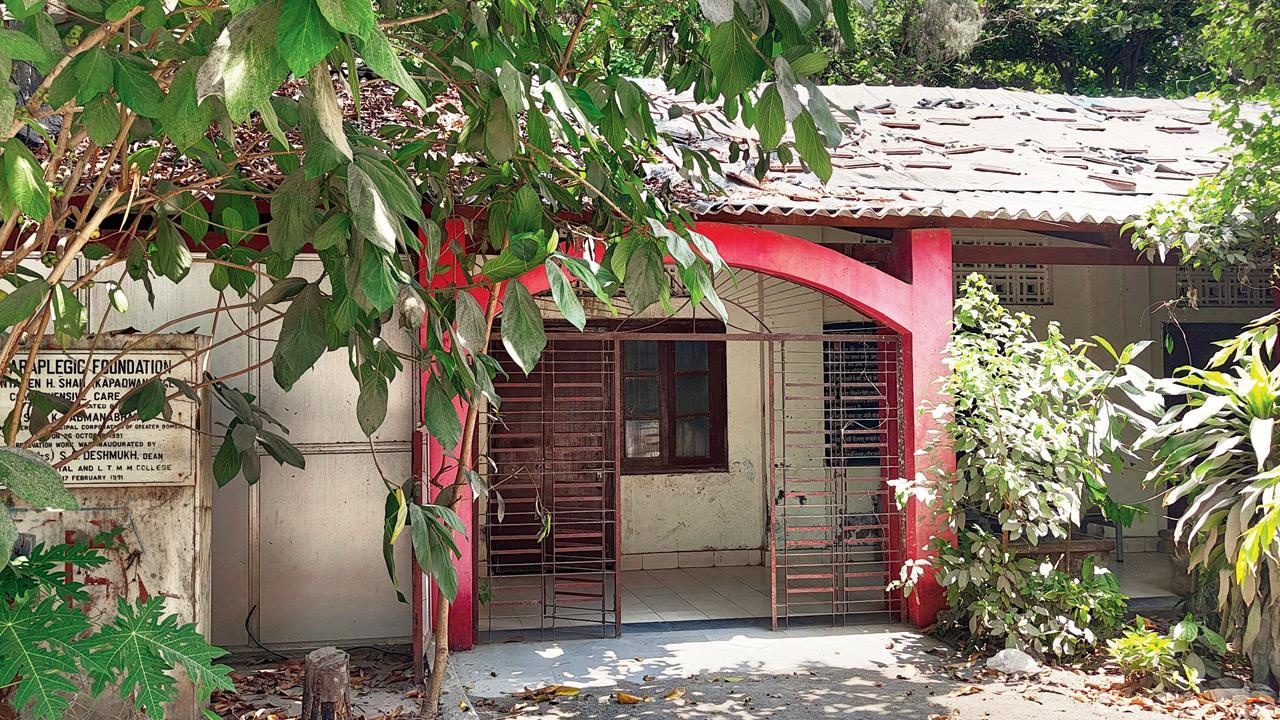As Sion Hospital and Paraplegic Foundation battle it out, paraplegic patients face brunt with no admissions since 2021

Old Barracks at Sion Hospital from where Paraplegic Foundation has been operating since 1990
While many measures have been taken to improve patient care at public hospitals, tiffs between various authorities undermine such efforts. A recent example of this is the ongoing legal battle, which has reached Supreme Court, between the Lokmanya Tilak Municipal Medical College and General Hospital, commonly known as Sion Hospital, and the Paraplegic Foundation, which has resulted in the latter not admitting patients since 2021.
“First, the pandemic and now this court case... At present, only 25 former patients who have been a part of our vocational training programme are currently making bed pads [which are sold to hospitals or individuals to raise funds] on our Sion Hospital premises. We discharged the last group of 26 patients in 2021. We treated them during the pandemic as well because completing their treatment was important,” said Dr Bhagyesh V Lad, administrative officer of the foundation, which has been operating from the Old Barracks on Sion Hospital’s premises since 1990.

Entrance of space which hospital has allotted to foundation where a ramp is being built. PICS/RITIKA GONDHALEKAR
The hospital authorities, meanwhile, claim that the foundation has stopped taking admissions since 2020 and was barely treating any patients. “The foundation took in just seven patients in 2020 and 14 patients in 2019. And this was despite the hospital having stopped referring its paraplegic patients to the foundation since 2018. The foundation, as far as we know, had taken in patients from outside the hospital, and they were economically backwards,” said an official from the hospital.
A legal matter
The tussle, which came to the fore again with Sion Hospital approaching the Supreme Court last month, began last year when the Brihanmumbai Municipal Corporation (BMC) notified the foundation to vacate its premises, measuring 14,000 sq ft in area, as part of the redevelopment of the hospital. After a city civil court rejected the appeal filed by the foundation and asked it to vacate the premises in the interest of patients, the foundation moved the Bombay High Court, which subsequently directed the hospital to make 1400 sq ft available to the foundation based on its requirements. However, now the hospital has challenged this verdict in apex court.

The foundation, though it agreed that it had no legal right over the land, stated that its work was important and had been recognised as such since 1989. “The then-Municipal Commissioner S S Tinaikar had mentioned in an official letter that organisations like ours are important as they help reduce the burden on civic hospitals. Since then, the hospital has cooperated with us. However, it’s only now that it has started having issues,” said Lad.
A hospital official, on the other hand, claimed, “We have made alternative arrangements to treat paraplegic patients, and the foundation has, anyway, not done any work in the past five to 10 years.”
Foundation’s edge
“The alternative location that the hospital has provided is not ready yet. They are still building a ramp–a must for paraplegics. Also, we do not know how to function in a 1400-sq-ft area against the current 14,000-sq-ft area. At present, we have 27 beds and sufficient space for all physiotherapy equipment and to conduct vocational training. However, with such a space crunch, we can only focus on treatment, and we will have to look for options for rehabilitation. The hospital has promised us that they would complete the works and make the space available at the earliest,” said Lad. The foundation claims it has treated over 10,000 patients since 1990.

Dr Bhagyesh V Lad, administrative officer, Paraplegic Foundation
Toll on patients
However, this tug-of-war has resulted in a lack of treatment for paraplegic patients. “I lost sensation in my lower limbs after I met with an accident almost 25 years ago. At that time, I was admitted to Sion Hospital, and then the foundation treated and rehabilitated me. Most of the funds were raised by the foundation, and my family managed to pay some amount. Back then, I did not think that I would be able to earn a living.
Today, I make bed pads that are required by bedridden patients. Through this, I can provide financial assistance to my family,” said one of the former patients who operates from the old barracks.
His colleagues, however, worry about the fate of the vocational training programme and treatment of those in need if the foundation ceases to operate. “Our country needs many such foundations. Though other NGOs treat people like us, this one is attached to a fully functional civic hospital, which makes it more accessible than others. It would be great if the authorities could put their differences aside and work together towards the betterment of paraplegics,” said another former patient.
Asked about plans to provide the foundation a better space in the new building after hospital renovations are carried out, an official said, “Our aim is to get the place vacated so that the renovation works go ahead, as that will help us provide medical treatment to a larger section of the population. We have not decided anything about giving them [the foundation] a place in the renovated building yet.”
 Subscribe today by clicking the link and stay updated with the latest news!" Click here!
Subscribe today by clicking the link and stay updated with the latest news!" Click here!








